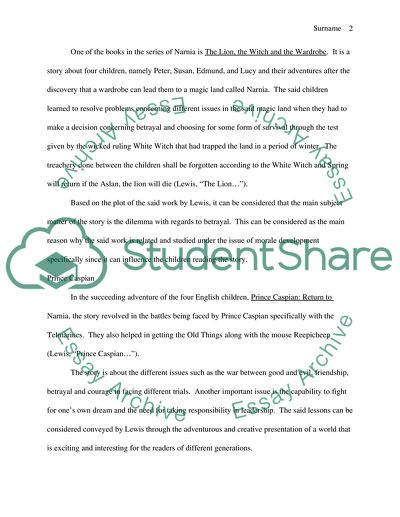Cite this document
(How the Works of C.S. Lewis Foster Morale Development in Children Research Paper, n.d.)
How the Works of C.S. Lewis Foster Morale Development in Children Research Paper. Retrieved from https://studentshare.org/philosophy/1723927-how-the-works-of-cs-lewis-foster-morale-development-in-children-tied-to-lawrence-kohlbergs-stages-of-development
How the Works of C.S. Lewis Foster Morale Development in Children Research Paper. Retrieved from https://studentshare.org/philosophy/1723927-how-the-works-of-cs-lewis-foster-morale-development-in-children-tied-to-lawrence-kohlbergs-stages-of-development
(How the Works of C.S. Lewis Foster Morale Development in Children Research Paper)
How the Works of C.S. Lewis Foster Morale Development in Children Research Paper. https://studentshare.org/philosophy/1723927-how-the-works-of-cs-lewis-foster-morale-development-in-children-tied-to-lawrence-kohlbergs-stages-of-development.
How the Works of C.S. Lewis Foster Morale Development in Children Research Paper. https://studentshare.org/philosophy/1723927-how-the-works-of-cs-lewis-foster-morale-development-in-children-tied-to-lawrence-kohlbergs-stages-of-development.
“How the Works of C.S. Lewis Foster Morale Development in Children Research Paper”, n.d. https://studentshare.org/philosophy/1723927-how-the-works-of-cs-lewis-foster-morale-development-in-children-tied-to-lawrence-kohlbergs-stages-of-development.


